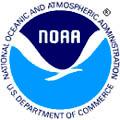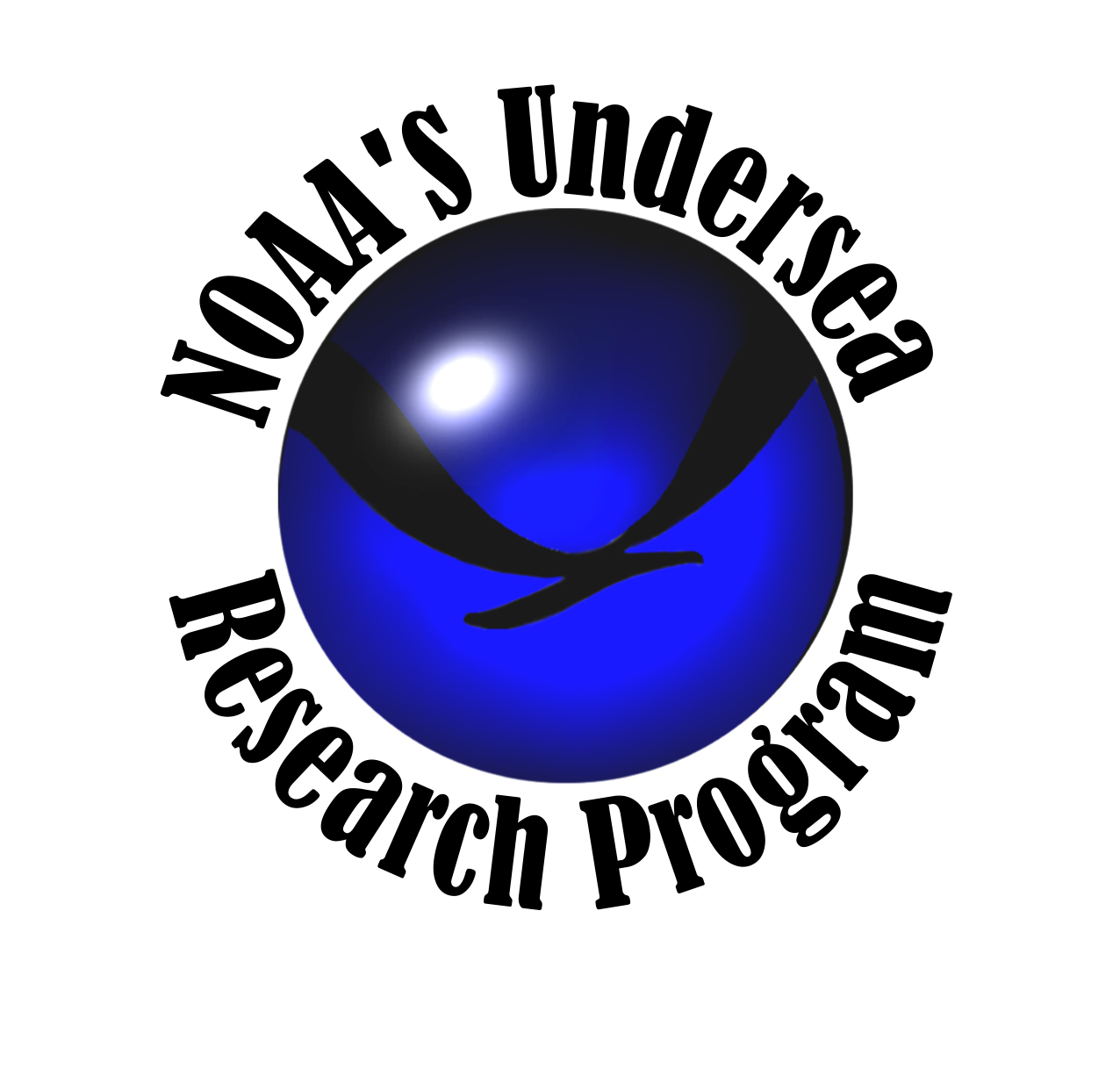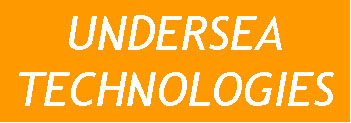
Field
Stations Support
Ships Diving
Aquarius Undersea Lab
Remotely
Operated Vehicles Autonomous
Underwater Vehicles
Observatories Submersibles
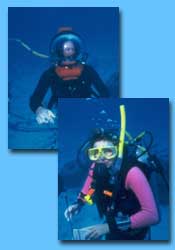 In shallow water, wet diving
is the most effective way to study the seas. Divers are better than
robotic vehicles at working around complex features like coral or
rocky reefs. Although strides have been made to make deeper diving
possible, there are still severe restrictions on the depth and length
of time divers can spend underwater. Research on undersea ecosystems
often requires diving to depths beyond 40 m (128 ft), work not easily
done with conventional scuba diving equipment. In shallow water, wet diving
is the most effective way to study the seas. Divers are better than
robotic vehicles at working around complex features like coral or
rocky reefs. Although strides have been made to make deeper diving
possible, there are still severe restrictions on the depth and length
of time divers can spend underwater. Research on undersea ecosystems
often requires diving to depths beyond 40 m (128 ft), work not easily
done with conventional scuba diving equipment.
Using oxygen enriched air (nitrox), divers are able to extend their bottom time since they absorb less nitrogen in their blood. NOAA's Undersea Research Program (NURP) funded researchers working on Carolina offshore reefs depend on nitrox to save time and money. NURP provides scientists with equipment and personnel to carry out their missions. In 2001, the program helped scientists conduct almost 9,000 nitrox dives with a flawless safety record. Techniques for the safe use of nitrox are also published along with dive tables in the NOAA Diving Manual. |
|
|
|
|
NURP operations cover the globe from the Arctic to the Antarctic. Bases of operations on shore are determined by the dive site locations. All the NURP Centers have field facilities from which dive operations can be deploy. In addition, several NURP Centers maintain remote field stations that allow them to support a variety of coastal research projects more effectively.
Caribbean Marine Research Center, Lee Stocking Island
Mid-Atlantic
Center, Rutgers University Marine Field
Station, Tuckerton, NJ
|
|
|
Long-term Ecosystem Observatory (LEO) Rutgers University and the Woods Hole Oceanographic Institution (WHOI) have developed a Long-term Ecosystem Observatory (LEO-15) that sits 15 meters deep on the inner continental shelf of New Jersey. LEO-15 continuously monitors its environment, and it is now the focus of a broad spectrum of research sponsored by NURP's Mid-Atlantic Bight (MAB) research center. Since its inception, many projects at LEO-15 have been supported with funding from the National Science Foundation, NURP, and the National Ocean Partnership Program. A dozen different sensors at LEO-15 provide real-time information. LEO's Web site receives real-time data from satellites and the in situ sensors. An electro-fiber optic cable runs along the bottom of the ocean to two submerged nodes. The nodes have profiling instruments, which measure temperature, salinity, and depth, which are controlled by scientists via the Internet onshore. For more information regarding LEO-15, please see http://marine.rutgers.edu/nurp/leo15.html. |
|
| NURP makes a variety of research submersibles available. Pisces V is owned by NURP and operated by the Hawaii & West Pacific regional center. Both subs carry a pilot and two scientists. They are capable of diving to 2000 meters. The submersible is custom equipped to accomodate a variety of mission requirements. Standard gear includes external video and still cameras, two hydraulic manipulator arms, a CTD profiler and color sonar. Pisces V's mother ship is the 253 ft. RV Ka'imikai-o-Kanaloa (RV KOK). | 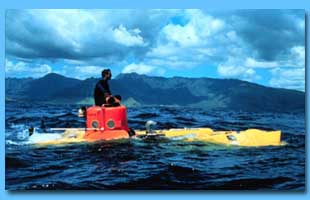 |
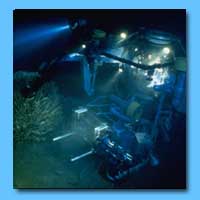 |
With its fish
bowl acrylic sphere, two scientists comfortably make observations
at 920 m (3,000 ft) while inside the Johnson-Sea-Link (JSL)
submersible. JSL is owned and operated by the Harbor Branch
Oceanographic Institution (HBOI) and leased to NURP scientists. |
| Delta has nineteen viewing ports and can reach a depth of 370 m (1,100 ft). Owned and operated by Delta Oceanographics, the submersible is small enough to be flown by plane to research sites around the world and versatile enough to be operated from ships of opportunity. | 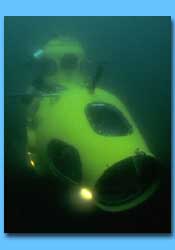 |
 |
Alvin is a three-person deep submersible vehicle (DSV) with a depth capability of 4,500 m(14,450 ft). It is owned by the U.S. Navy, operated by the W-H-O-I and funded by the NSF, NOAA, and Navy. Alvin has taken more than 8,300 people to the deep sea on about 4,000 dives and about 20,000 hours underwater. |
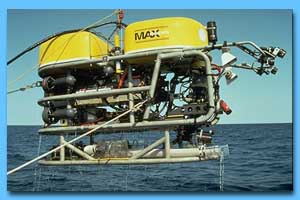 NURP
operates undersea robots or remotely operated
vehicles (ROVs) that are deployed from
ships of opportunity. We provide access
to a variety of ROVs some leased, some
owned by the program. Our ROVs have worked
from the tropics to the poles. A typical
example of an ROV used for underwater
science in the Kraken, owned by the NA
& GL center. The Kraken has a depth capability
of 940 meters (3,000 feet). The manipulator
arm works like the arms and hands of a
human body to pick up specimens and place
them in containers. Kraken's suction samplers
collect algae, animals, and sediments.
The video cameras on the Kraken allow
for wide angle, close up, low light images,
and a 35 mm film camera with a flash allows
for high resolution imaging and photography.
A laser determines the size of objects
underwater and a scanning sonar uses sound
to view objects and organisms outside
the range of the cameras. NURP
operates undersea robots or remotely operated
vehicles (ROVs) that are deployed from
ships of opportunity. We provide access
to a variety of ROVs some leased, some
owned by the program. Our ROVs have worked
from the tropics to the poles. A typical
example of an ROV used for underwater
science in the Kraken, owned by the NA
& GL center. The Kraken has a depth capability
of 940 meters (3,000 feet). The manipulator
arm works like the arms and hands of a
human body to pick up specimens and place
them in containers. Kraken's suction samplers
collect algae, animals, and sediments.
The video cameras on the Kraken allow
for wide angle, close up, low light images,
and a 35 mm film camera with a flash allows
for high resolution imaging and photography.
A laser determines the size of objects
underwater and a scanning sonar uses sound
to view objects and organisms outside
the range of the cameras. |
|
|
|
|
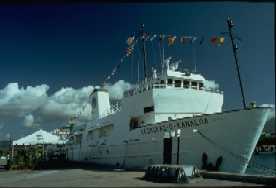 NURP charters a wide variety
of ships to support its projects. However,
one ship that is dedicated largely to NURP
projects is the RV Ka'imikai-o-Kanaloa (RV
KOK). In the Pacific Ocean where deep coral
reefs and fishery habitats remain largely
unexplored, NURP's 69 m (223 ft) support
vessel KOK used with the submersibles Pisces
IV & V herald a new era of deep ocean scientific
research. The KOK has a "moon pool" so that
navigation and communication equipment can
be lowered from the laboratory to below
the keel level. The ship also features a
multi-beam sonar mapping system for charting
the sea floor with high resolution coverage
to depths of seven miles. The KOK provides
facilities for 10 scientists and nine technicians
as well as a ship crew of 14 persons for
up to 50 days at sea. NURP charters a wide variety
of ships to support its projects. However,
one ship that is dedicated largely to NURP
projects is the RV Ka'imikai-o-Kanaloa (RV
KOK). In the Pacific Ocean where deep coral
reefs and fishery habitats remain largely
unexplored, NURP's 69 m (223 ft) support
vessel KOK used with the submersibles Pisces
IV & V herald a new era of deep ocean scientific
research. The KOK has a "moon pool" so that
navigation and communication equipment can
be lowered from the laboratory to below
the keel level. The ship also features a
multi-beam sonar mapping system for charting
the sea floor with high resolution coverage
to depths of seven miles. The KOK provides
facilities for 10 scientists and nine technicians
as well as a ship crew of 14 persons for
up to 50 days at sea.
All other support ships used for NURP operations are leased from a variety of vendors. |
|

NOAA's
Undersea Research Program
1315 East-West Highway, R/NURP
Silver Spring, MD 20910
301-713-2427, fax 301-713-1967
Contact
Webmaster | Privacy
Policy | Disclaimer
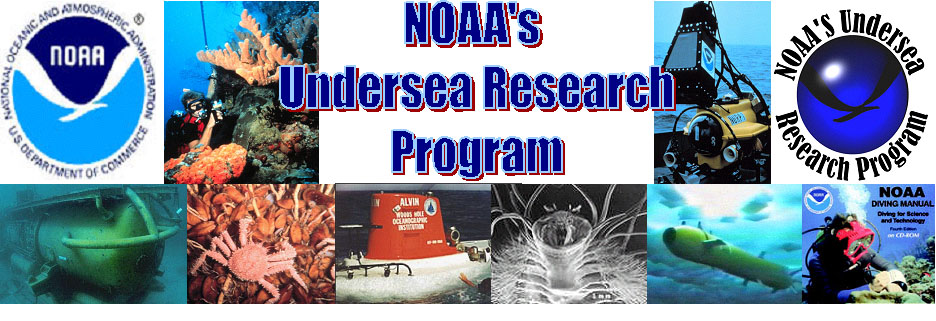

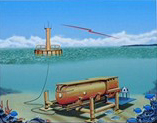
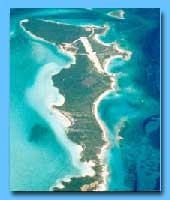
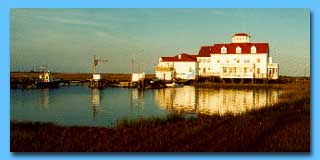
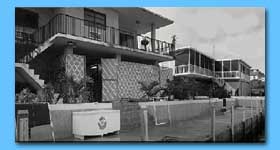
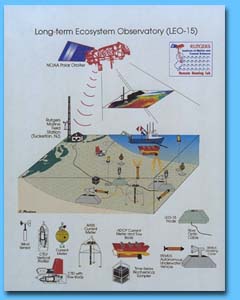
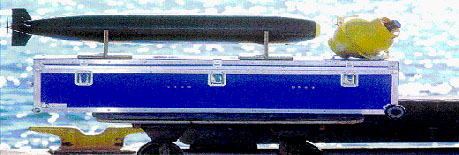 AUVs
are the most recent class of exploration
technology. Independent of the surface,
battery powered, and controlled by computers
using various levels of artificial intelligence,
these vehicles are programmed to carry
out various underwater survey tasks. The
Remus AUV was developed by Woods Hole
Oceanographic Institution for NURP's Mid-Atlantic
Bight Center to carry out wide area continental
shelf surveys.
AUVs
are the most recent class of exploration
technology. Independent of the surface,
battery powered, and controlled by computers
using various levels of artificial intelligence,
these vehicles are programmed to carry
out various underwater survey tasks. The
Remus AUV was developed by Woods Hole
Oceanographic Institution for NURP's Mid-Atlantic
Bight Center to carry out wide area continental
shelf surveys.
